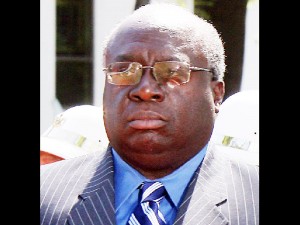
Thomas’ key mission was to relate war memories to the enduring relationship between the Philippines and the US. It was timed a week after July 4. To America, that day celebrates the US’ independence, but to the Philippines, it used to be the Filipino-American Friendship Day, which no one celebrates anymore.
But it wasn’t an easy mission.
Thomas avoided questions about tensions over the contested Spratly Islands when he opened the road show, “America in 3D (Diplomacy, Development and Defense),” although he was quick to entertain discussions about World War II, where he believed the Filipino-American bond was best manifested.
Shortly after the war, Thomas’ father, a US Army soldier, was assigned in the Philippines and Japan, from whom the ambassador said he derives fond memories about Filipino camaraderie.
This “mission to reconnect” led Thomas to the war veterans’ memorial wall here on Sunday to honor the fallen soldiers. He was joined by war veterans Magno Lamsis, 89, who survived the Death March from Bataan to Tarlac, and Maria Tekle, 85, a spy for Filipino guerrillas during World War II.
“You’re my hero,” Thomas told Lamsis, who uses a pair of crutches to walk.
The US Embassy mounted a separate forum at SM City Baguio, hoping to get Philippine Military Academy (PMA) cadets and residents to interact with the war veterans. These veterans charged through the rubble of Baguio City to liberate it from the Japanese Imperial Army in 1945.
But two generations have passed since the war and young Filipinos no longer remember these battles. Some soldiers who attended the forum also admitted that their age and deteriorating health had made them lose important memories about that war.
On Friday, Thomas visited PMA where he opened the academy’s American Learning Center, a library devoted to American studies, and engaged academy officials and cadets.
In a light moment, he challenged Cadet First Class Ernesto Bucalen to a sit-up exercise match.
“Is it true [that boxing champion Manny Pacquiao outran the cadets during his Baguio training]?” Thomas asked the cadets, before he challenged them.
The burly Thomas managed 58 sit-ups in a minute, beaten only by Bucalen’s 70 which he pulled off in under a minute.
During a roundtable forum on eco-tourism between Thomas and Baguio leaders on Saturday, a member of Thomas’ entourage had joked that only the legend of the Yamashita gold remains of recollections about Filipino-American friendship during the war.
His comment diverted the discussion to Japanese General Tomoyuki Yamashita, the leader of the Japanese Imperial Army that invaded Asian countries during World War II. The signing of an instrument of surrender by Yamashita to the Americans in Baguio City in 1945 was rendered by Fernando Amorsolo in a painting that hangs above the fireplace at the living room of the US ambassador’s residence in Camp John Hay.
Yamashita fled to Kiangan, Ifugao, where he and his men surrendered to the Americans on Sept. 2, 1945. The following day, he obeyed an order from Emperor Hirohito and signed an instrument of surrender at the US ambassador’s residence. The table where Yamashita signed the surrender papers is still at the US ambassador’s residence.
Mayor Mauricio Domogan said Yamashita’s surrender could be a new way of revitalizing Filipino-American friendship.
“Let us make September 3 a holiday. We, Filipinos, always celebrate our defeat [such as Araw ng Kagitingan or Fall of Bataan]. I once passed a bill making [Sept. 3] a holiday. It’s time we start celebrating our victories,” said Domogan, who returned to serving as mayor after finishing three terms as Baguio’s House representative in 2010.
He told Thomas that the Japanese bombed Camp John Hay after attacking Pearl Harbor in 1941 to start the war in the Pacific, and it ended full circle in Baguio with Yamashita’s surrender.
Domogan said making September 3 a holiday could also defuse talk that Yamashita’s treasure is in Baguio.
He said reviving stories about Baguio’s role in ending World War II in the Philippines could eventually overwhelm tales about the legendary treasure or Yamashita.
He said each time a local government project required digging up the roads, “we ignite rumors that we are treasure hunting.”
Treasure hunting for Japanese gold had plagued the city for decades, peaking between 1990 and 2002 when well-financed operations were mounted illegally in parts of Baguio, Domogan said.
When a flyover was being built in the 1990s by a Japanese firm, Domogan said he was tipped off about a treasure hunting expedition.
“I dressed up as a miner and led a few policemen to the site, and confirmed there really was treasure hunting. But they were Filipinos, not Japanese,” he said.
Rumors about the presence of Japanese treasure hunters were picked up by newspapers, however, and Domogan said he was confronted by the Japanese ambassador at that time about the report.
“The flyover was funded by Japanese grant money and they wanted to learn why they were being implicated in the hunt for Yamashita’s gold,” Domogan told Thomas.
A smiling Thomas broke the ice and replied: “No one’s found it yet so I can still get lucky.” With a report from Elmer Kristian Dauigoy, Inquirer Northern Luzon

